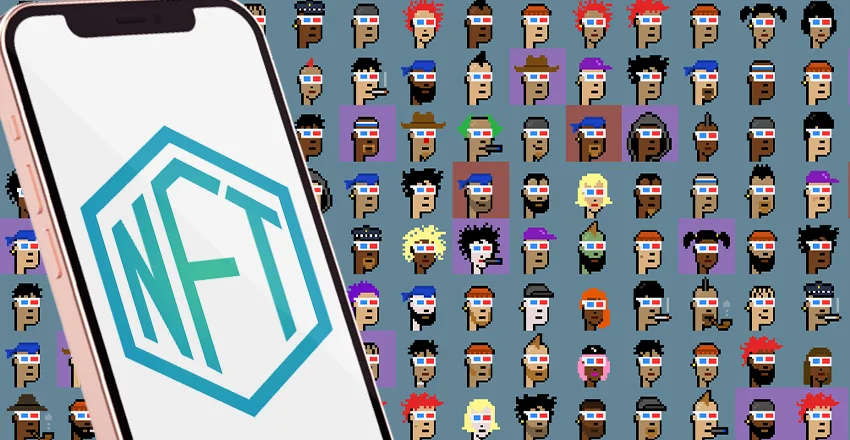- By Javeria
- January 10, 2024


NFTs are the Internet’s latest obsession. And they present real money-making potential. The CEO of crypto exchange Coinbase said that the NFT market could quickly surpass the company’s cryptocurrency trading business. Nearly 28.6 million wallets traded NFTs in 2021, up from some 545,000 in 2020. So what exactly is the concept behind NFTs and how to invest in NFTs? This is the article that covers all such details.
NFT stands for non-fungible tokens. These are the digital assets that are selling for millions of dollars and you can also invest in nfts. It represents real-world digital items like music, gifs, art, videos, etc. Anyone can seek ownership of these digital items. They have subjective value because they are in digital form, and you can’t exchange a piece of it with something else because nothing like it exists. It has become popular nowadays.
NFTs use blockchain technology which is used in cryptocurrencies but the difference is that NFTs are not a cryptocurrency. NFTS can only have one official owner at a time and they’re secured by the Ethereum blockchain and no one can modify the record of ownership or copy/paste a new NFT into existence.
NFT can be like one trading card but non-fungible. But let’s make it clear that Bitcoin is a fungible asset, you can trade it for another Bitcoin but not in the case of NFTs. Bitcoin is the leading cryptocurrency but another growing product is NFT or ‘non-fungible token’ which is almost like a digital version of a collectible.
NFTs exist on a blockchain and are distributed public ledger that records the transactions. NFTs are typically held on the Ethereum blockchain, although other blockchains support them as well. An NFT is created, or “minted” from digital objects that represent both tangible and intangible items, including:
You can even sell tweets. Twitter co-founder Jack Dorsey sold his first-ever tweet as an NFT for more than $2.9 million. NFTs are like physical collectors’ digital items. So instead of getting an actual painting to hang on the wall, the buyer gets a digital file instead.
They also get exclusive ownership rights. NFTs can have only one owner at a time. NFTs’ unique data makes it easy to verify their ownership and transfer tokens between owners. The owner or creator can also store specific information inside them. For instance, artists can sign their artwork by including their signature in an NFTs metadata.
Any digital image can be purchased as an NFT. If you’re a newbie, there are a few things you should consider when you want to invest in NFTs. First of all, you need to decide from which marketplace you will buy, which type of digital wallet is essential to store it and what kind of cryptocurrency you’ll use to complete the sale.
If you want to know how to invest in NFTs, a user needs to open a digital wallet that allows them to store cryptocurrency and NFT.
There are a lot of NFT exchanges operating in cyberspace today. Marketplaces from where you can buy digital artworks like Opensea.io, Niftygateway.com, Rarible.com, and Superrare.com.
There are some risks if you want to invest in NFTs:
With NFTs, the scope of possibilities is infinite. Apart from game collectibles and works of digital art, non-fungible tokens have a huge capacity to represent virtual-world property items. The growing popularity and adoption of NFTs indicate that in the future other platforms apart from Ethereum will turn their focus toward NFT support.
If you have any comments, queries, or suggestions regarding this article, please state them in the comments section below.
Thanks for reading